|
John Tyman's Cultures in Context Series NEPAL |
|
|
|
447-474 |
|
John Tyman's Cultures in Context Series NEPAL |
|
|
|
447-474 |
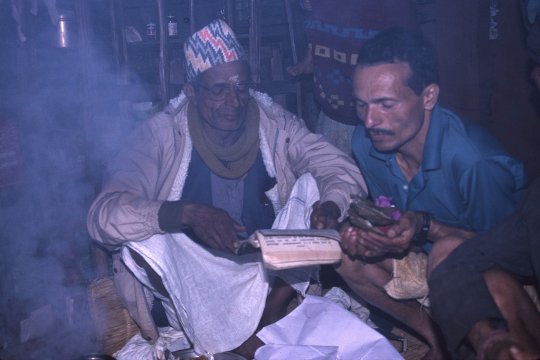 |
| 451. As incense was burned and the room filled with smoke, the priest read from a sacred text and the shop’s owner prayed for release. |
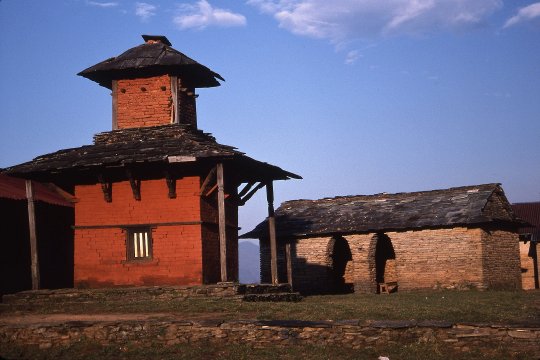 |
| 452. The temple in the school grounds, with its adjacent kitchen, was little used while I was there, but was no doubt crammed with worshippers during festivals. |
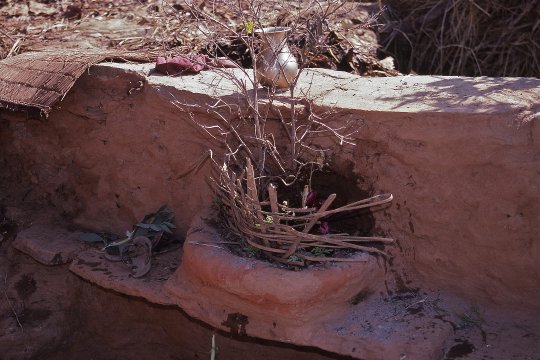 |
| 454. Public places like this are not, however, a pre-requisite to worship, for every home has one or more little shrines or family altars for daily puja. |
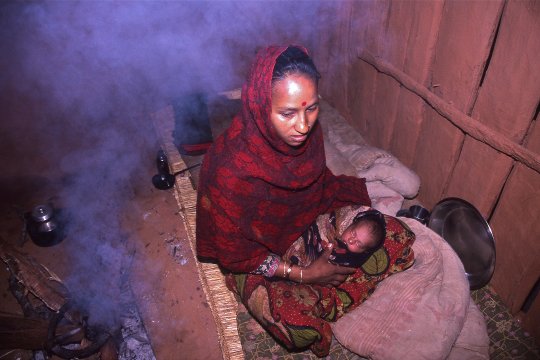 |
| 457. After she has given birth a woman must remain in her house in isolation with her child and can have no contact of any kind with men. |
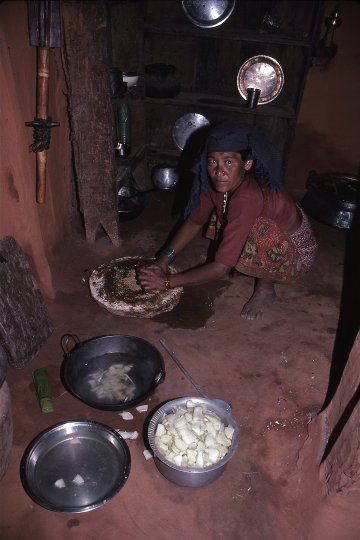 |
| 458. During this time her clothes will be washed by other women, and her mother (and/or friends) will feed her and also prepare the inevitable feast. |
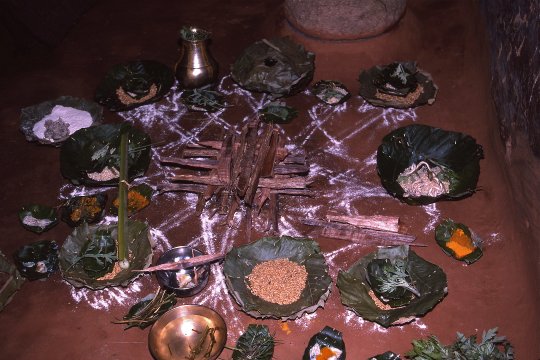 |
| 461. The surface of the verandah outside will have been decorated ahead of time and a host of ritual offerings arranged to ensure the baby’s happy introduction to the outside world. |
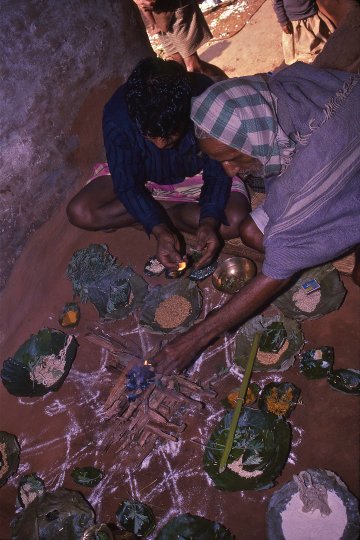 |
| 462. The ceremony itself will have commenced before she emerges. Incense will be burned. |
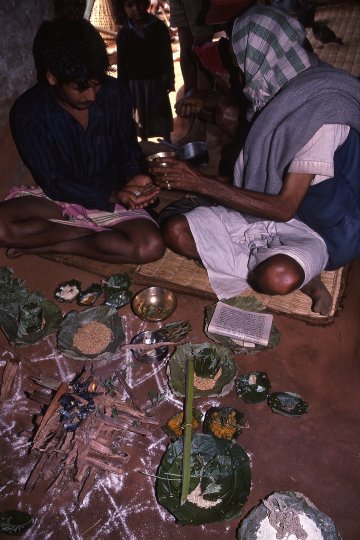 |
| 463. The baby’s father will undergo ritual cleansing: and prayers will be offered on the child’s behalf. |
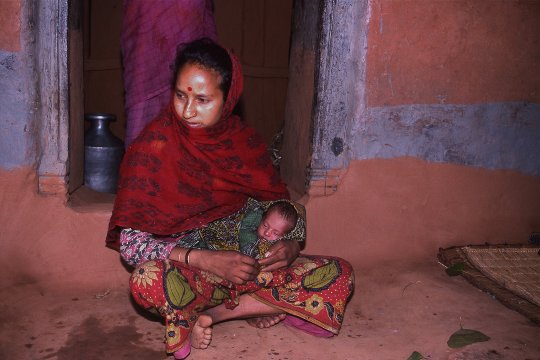 |
| 464. When they emerge from the house the mother and child sit just outside the door, close the area reserved for the ceremony. |
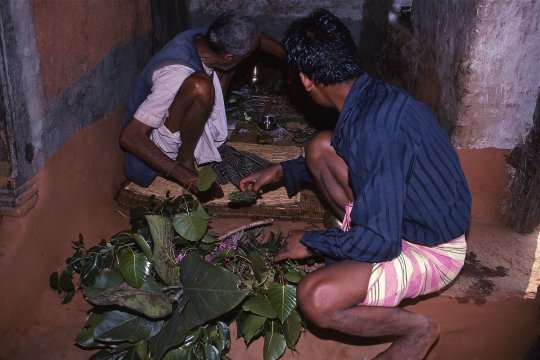 |
| 465. Meanwhile more offerings have been added to the fire. |
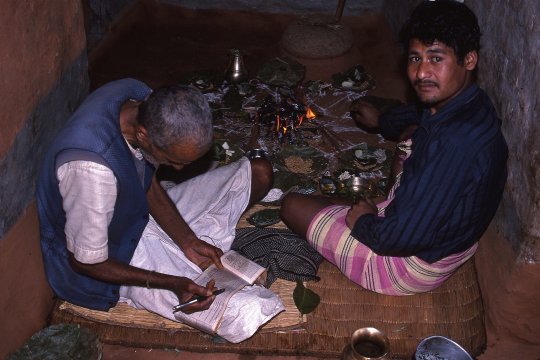 |
| 466. The priest will have consulted his astronomical chart to determine the position of the stars in the sky at the exact moment of birth, in order to determine a favourable first name for the child. |
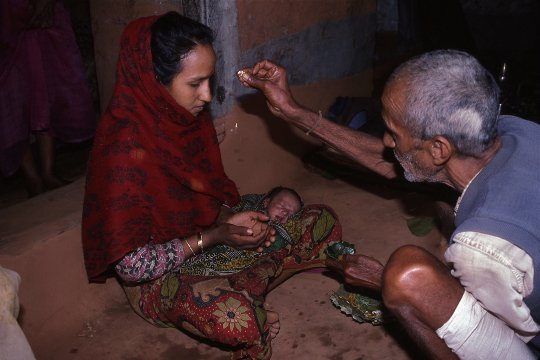 |
| 467. The young mother will be blessed by the priest and her forehead marked with a rice paste |
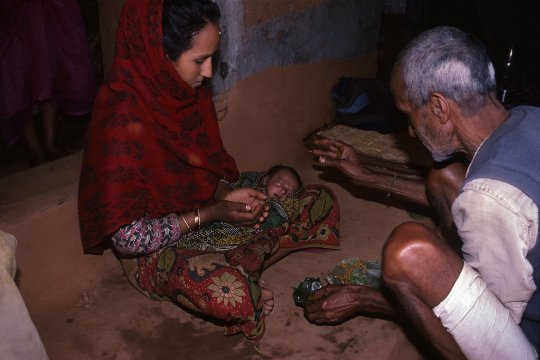 |
| 468. And prayers will be offered for her and the baby. |
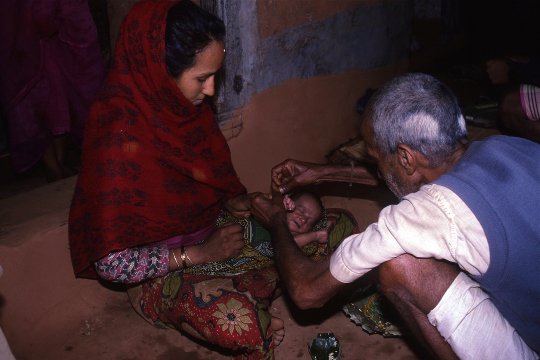 |
| 469. Sacred threads woven into bracelets will now be tied on the baby’s arms and legs, and also given to its parents. |
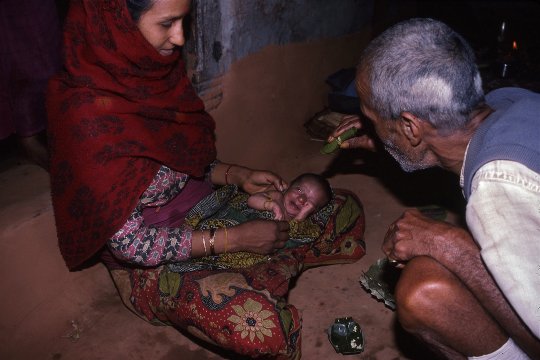 |
| 470. Its name (its first name anyway) will be whispered to the baby through a rolled up leaf. |
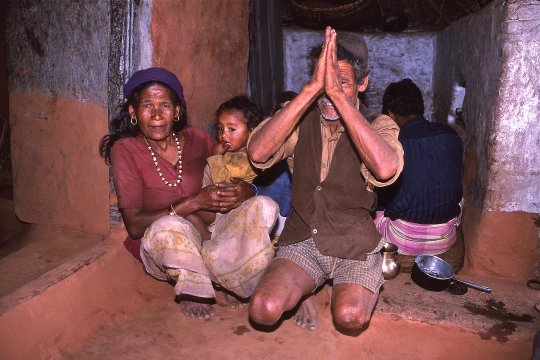 |
| 471. The second name will be chosen by grandparents and the third name by the parents. |
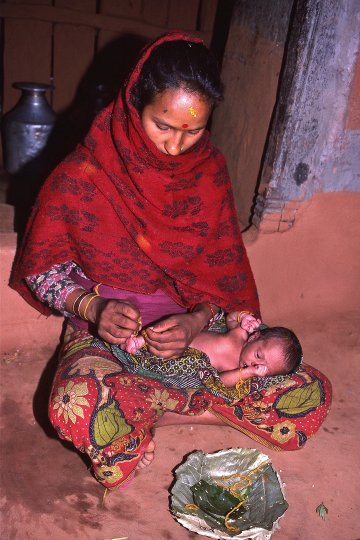 |
| 472. The bracelets will need adjustment later, but when everything is finished, everyone will be sprinkled with cows’s urine. |
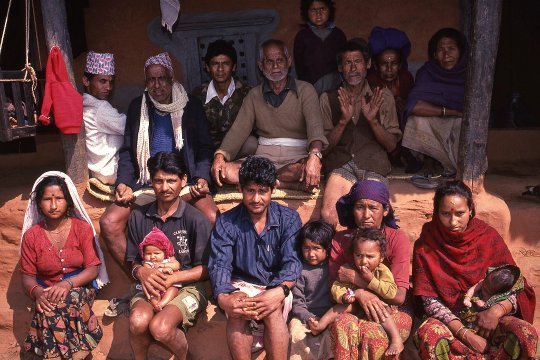 |
| 473. And relatives, friends and neighbours will gather for a feast. |

![]()
Text, photos and recordings
by John Tyman
Intended for Educational Use
Only.
Contact Dr. John Tyman at johntyman2@gmail.com
for more information regarding
licensing.
![]()
www.hillmanweb.com
Photo processing, Web page layout,
formatting and hosting by
William
Hillman ~ Brandon, Manitoba ~ Canada